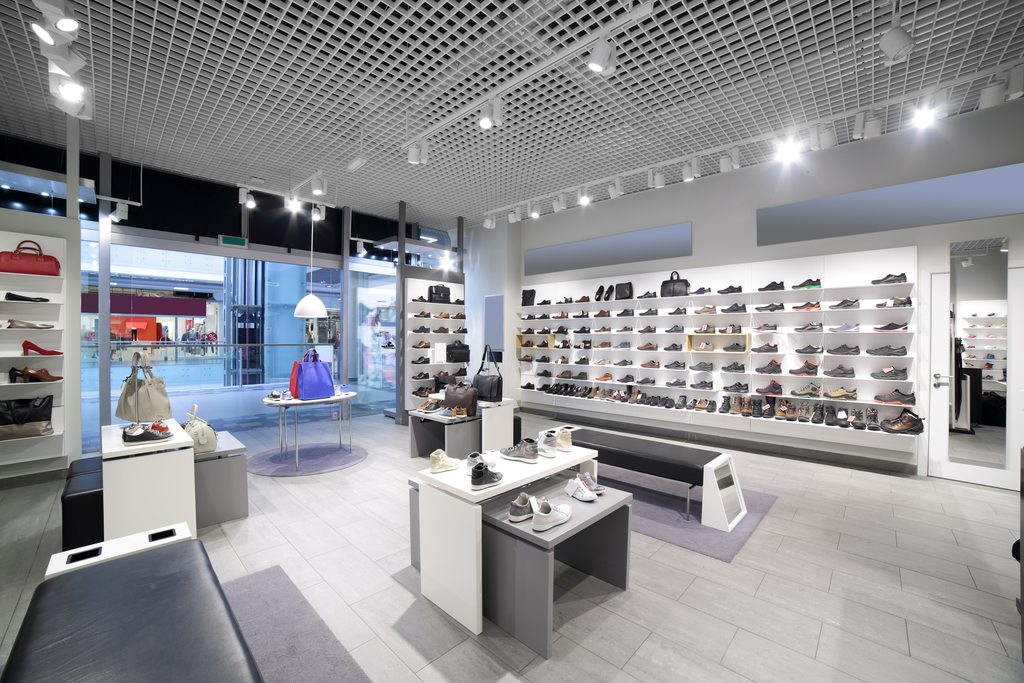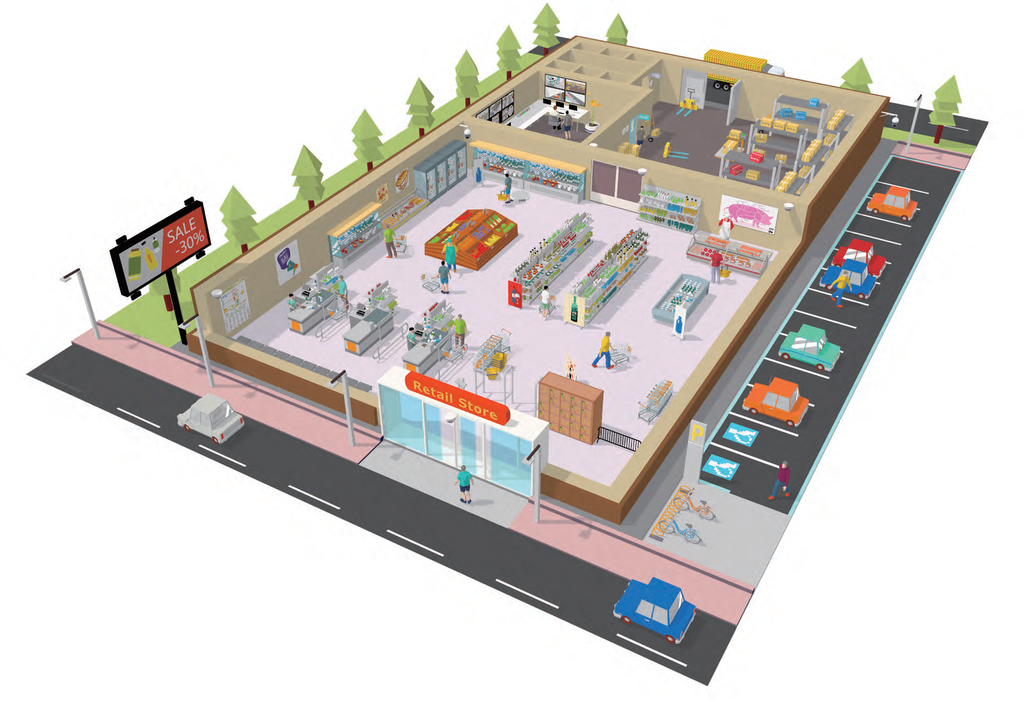
Brian Sims
Editor

Brian Sims
Editor
CCTV can provide shops with far more than a robust security system and Ben Perkins explains that it can now help provide vital data on customers and operational efficiency.
HIGH STREET retailers face tougher trading conditions than ever before. With increased competition from online sales, tighter household budgets and squeezed margins, the need for retailers to diversify and innovate has never been more important.
There are many ways to innovate in retail, from advertising and promotions, store layout, keeping up with market trends, and line extensions, to name a few. There is, however, one overriding need for any innovation and this is information. As the saying goes, information is power.
Information is an area where traditional retailers have struggled against their online counterparts, where technology enables online stores to know so much more about their customers. Website cookies and analytics mean online companies can tell you exactly who their customers are, how long they spend ‘in store’, even their age and gender. This gives online companies a powerful advantage by being able to specifically target their customers with tailored offers and messages. How often have you been online and been given suggestions of other items you might want to buy? How many time have you bought these items?
There is, however, a solution to many of these perceived disadvantages for the traditional retail stores. A simple answer that almost every store already uses: CCTV, or more accurately – video surveillance.
Now there is obviously a caveat to this and it’s important to mention it from the outset. There is little that can be done using an older traditional, analogue CCTV system. These types of system comprise of analogue cameras and transmission infrastructure, and so by their very nature are limited in what they can do – they are truly closed-circuit TV systems. Lacking a digital or IP interface, they are not capable of being integrated with modern computer networks and software. A traditional CCTV system isn’t smart; it doesn’t know what it’s there to do – all it knows is how to record video, and it is down to the user to determine the information from that recorded data.
Modern video surveillance
So, the first thing to do is dispel the notion that a modern video surveillance system is just a basic tool, unable to perform tasks without interaction. A modern, well-designed and creative system is now a far-reaching business tool.
So, in your opinion what is the traditional role of a CCTV system for a retail location? Most would conclude it has always been to deter and detect crime. So, in the past few years, manufacturers have worked very hard to make intelligent CCTV systems that do understand what their job is. Through video analytics including motion detection and aspects such as dwell times and items being left or removed, there has been a leap forward in what systems are capable of doing. This includes:
We’re capturing our audience on our CCTV systems every day and we’ll never look at 99% of the data recorded. We will only examine the recordings if something has gone wrong, which makes it a very reactionary process. This is why surveillance systems have always created negative feelings, as it was always used for a negative reason. But what if this data could be used for other applications? What if the system itself could monitor this data and use it for positive applications in real time? What if we could tie in more sophisticated analytics – or even artificial intelligence, which is emerging on many platforms? What if a system could actually learn?
Now this starts to open up a whole new area – this isn’t just a CCTV system, it’s a real, tangible business tool. Even a marketing tool.
Digital profiling
CCTV systems are now so intuitive they can help answer a raft of questions about the habits of customers who have visited a store. This includes answers to the following:
To take the system one step further, can the AI within the system integrate different features together to gain even further benefits? Integrating the POS data with the demographic information means you can tell which groups of people are buying what products. You can link temperature monitors into the system so if any refrigeration or freezer unit was to malfunction, an alarm can be raised, potentially saving hundreds of pounds worth of stock. Why not integrate the staff access control system with the face recognition cameras to tell if a staff member is being clocked in by someone else, or in case of people entering controlled areas such as where cash or records are kept.
So, now the system that’s just been deterring and detecting crime is also giving you the demographics of your customers and when they come to store. You have a way to modify in-store advertisements for different customers. You can now monitor stock and cash levels in real time to dramatically reduce the chance of internal theft. You can intelligently control staffing costs at the same time as maintaining important customer service. You have data on the best store layout, helping to put the most profitable items in the most visited areas. You can now hold a more diverse stock range by hosting portable displays, which can be stocked with age-sensitive products and ensure they’re rotated to match the visitor demographic on that particular day. You can even turn the data into a profit margin by accurately demonstrating the demographics to prospective manufacturers in order to sell and promote product space.
Wait; weren’t these some of the advantages the online stores had over you before you started reading this?
You may be surprised to hear that these tools are already available today. By making simple modifications to your existing CCTV system, you can obtain and use accurate data about your customers. Video surveillance can give you the power of information. The question is, what will you do with it?
Now, when it comes to tighter household budgets, we’ve not created a solution for that one. Yet. But by intelligently controlling expenditure while increasing sales in your store, you can at least do something about your household budget.
Ben Perkins is head of operations at Dahua UK and Ireland. For more information visit, http://uk.dahuasecurity.com/uk/



Queen Anne House
25-27 Broadway
MAIDENHEAD
SL6 1LY
UNITED KINGDOM
01628 673 667